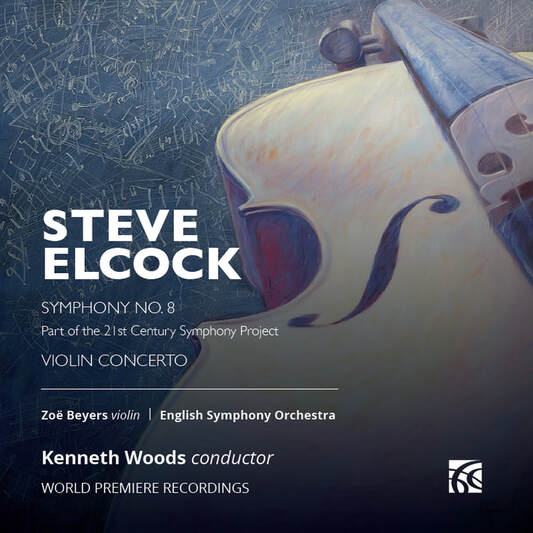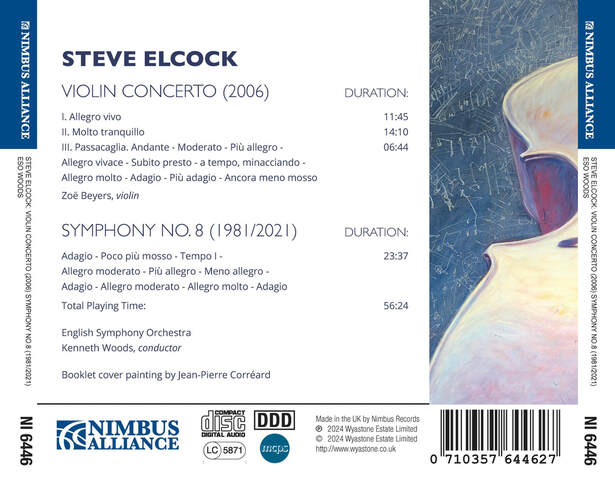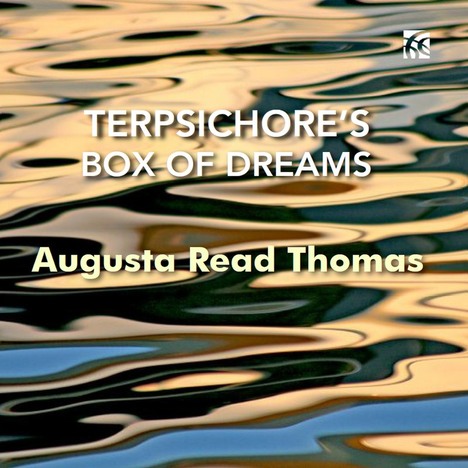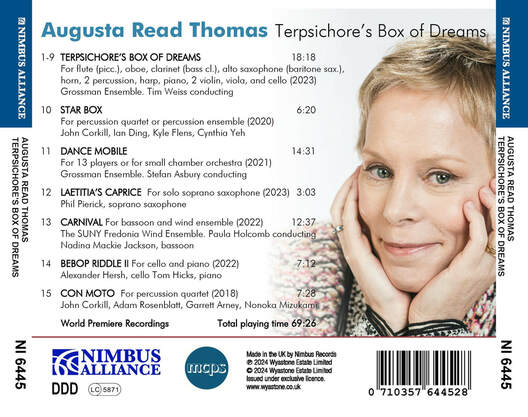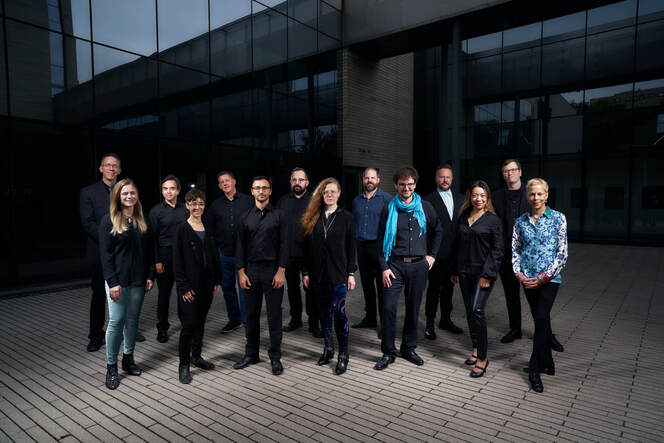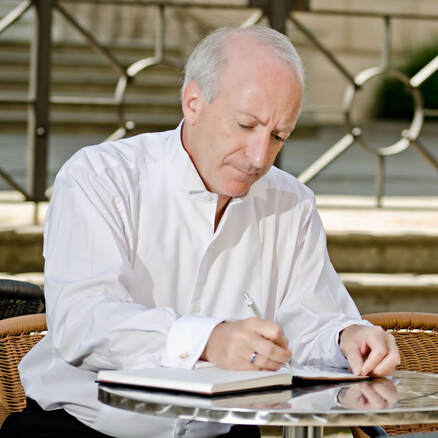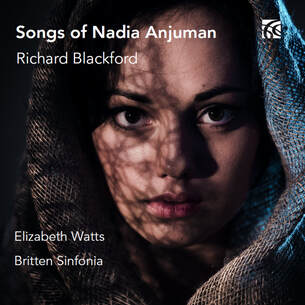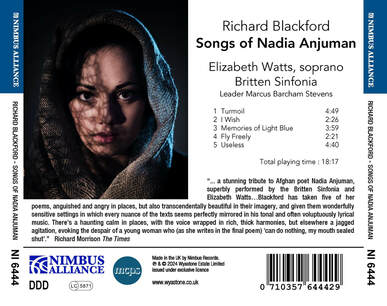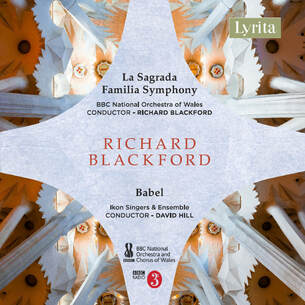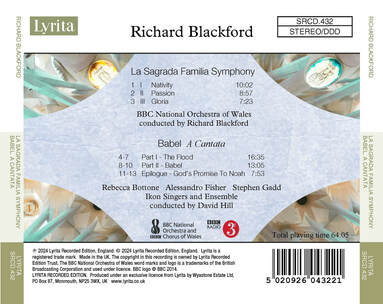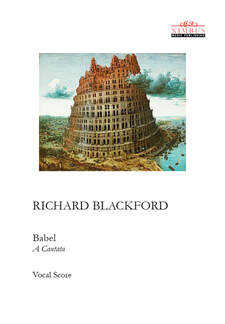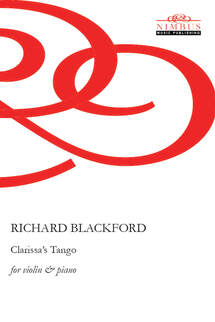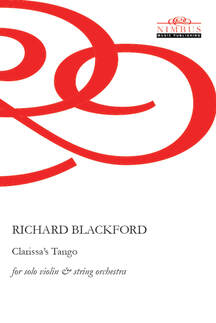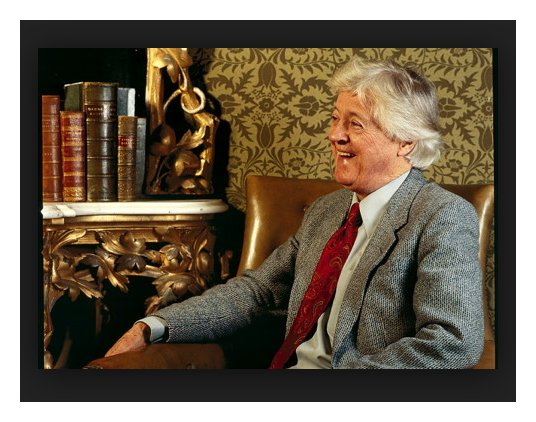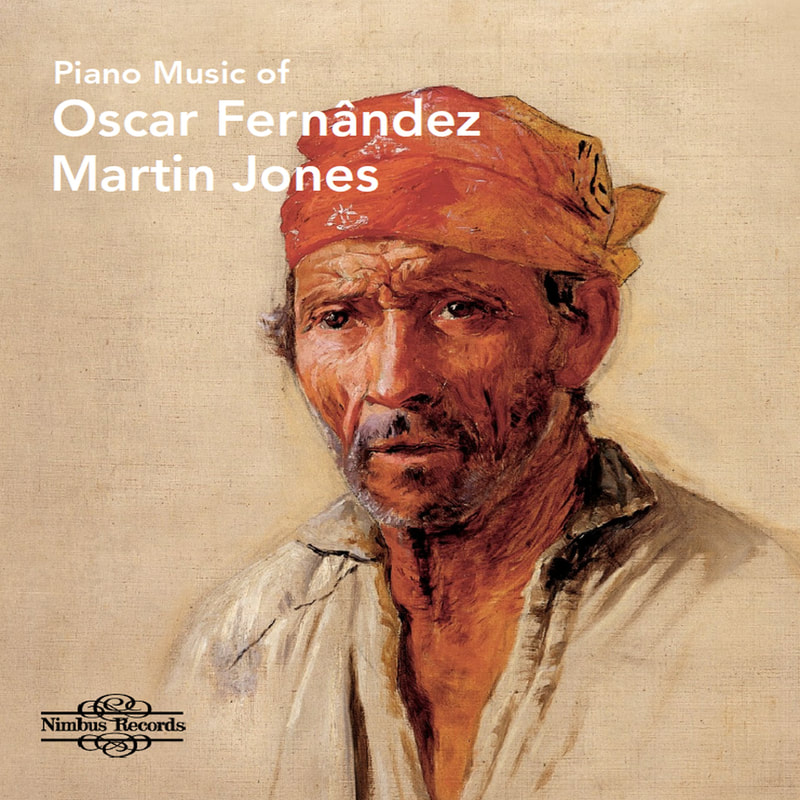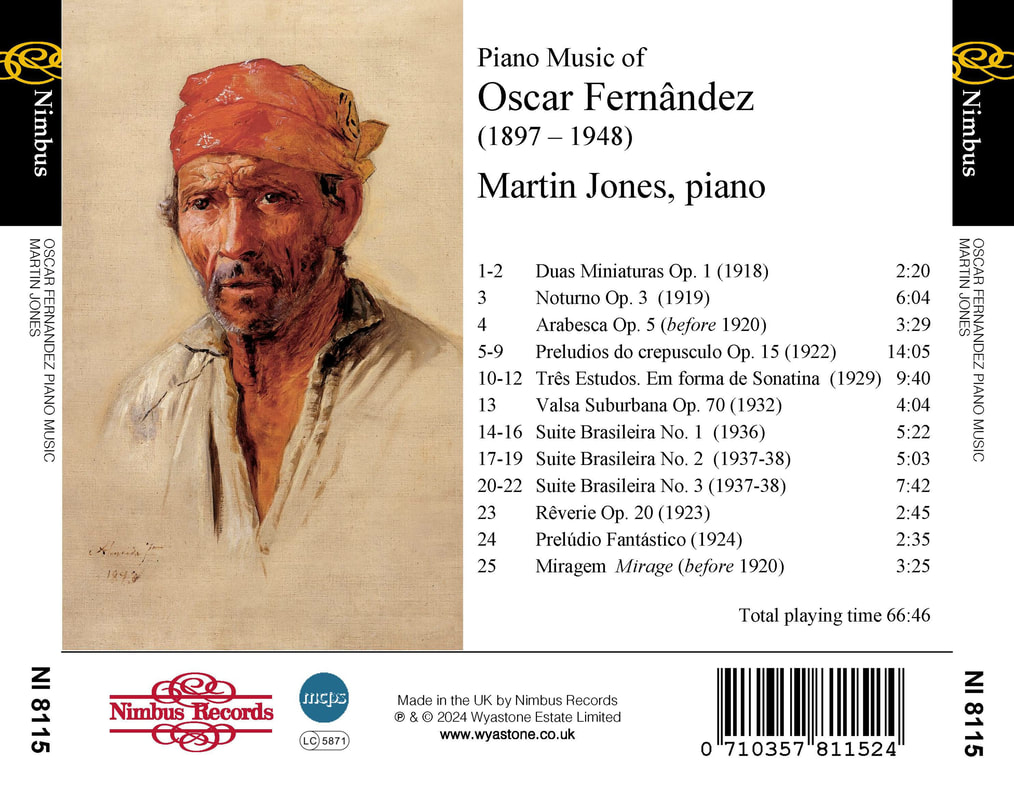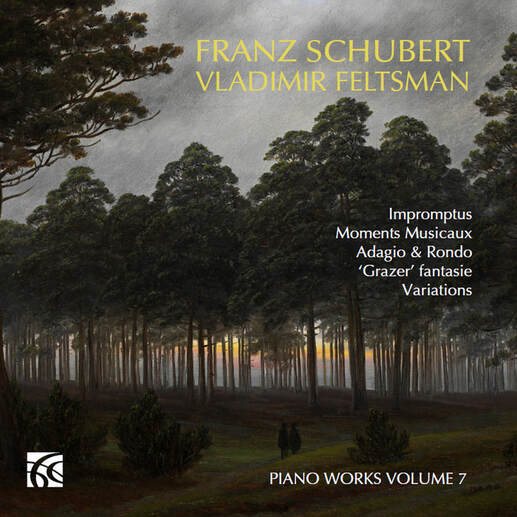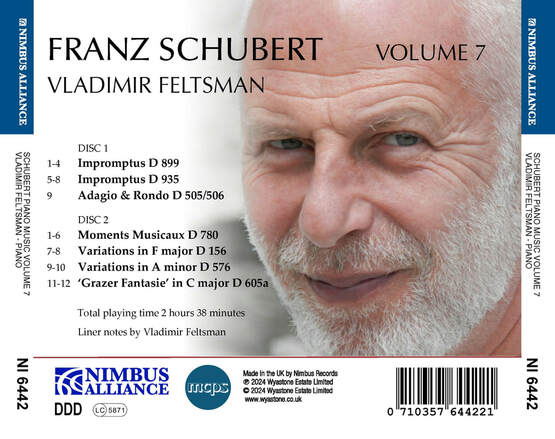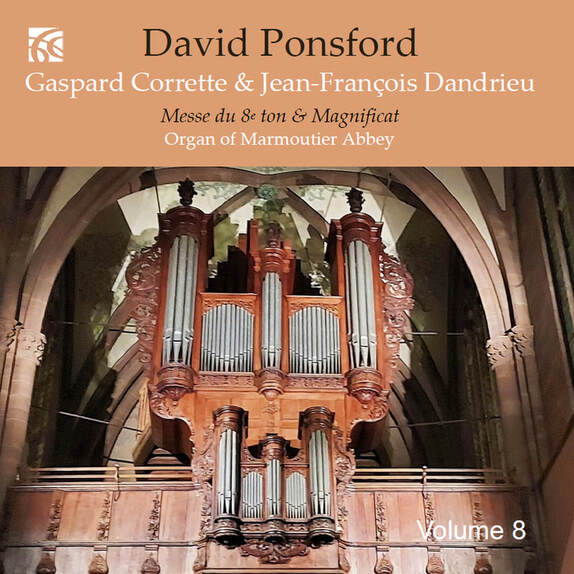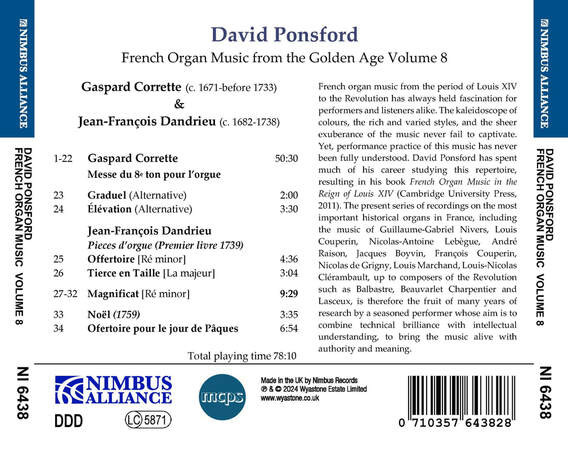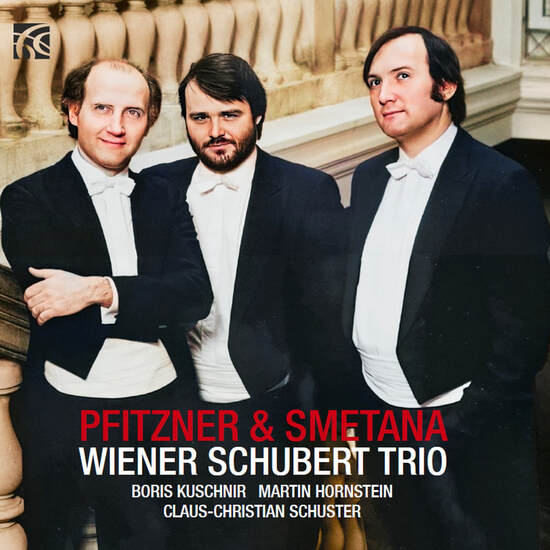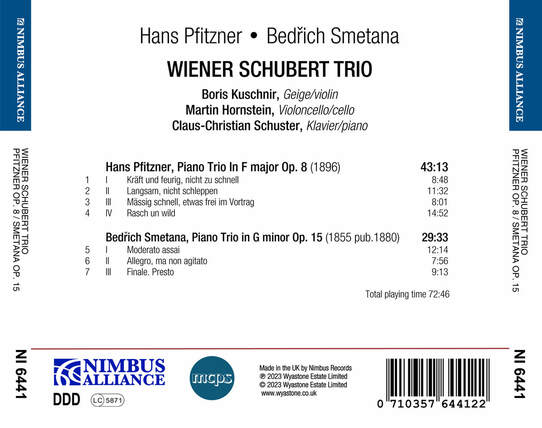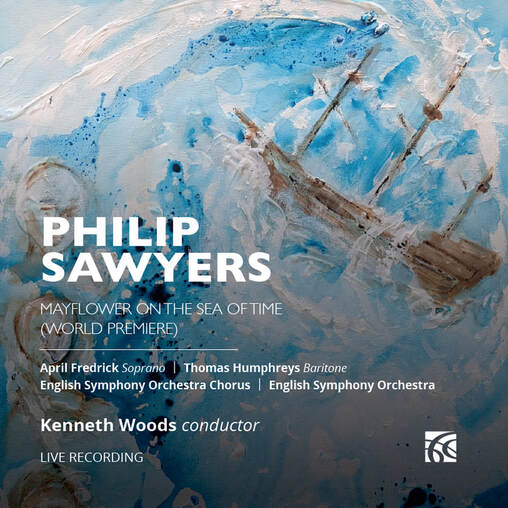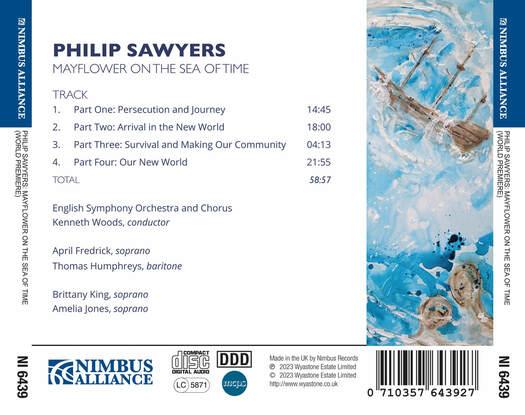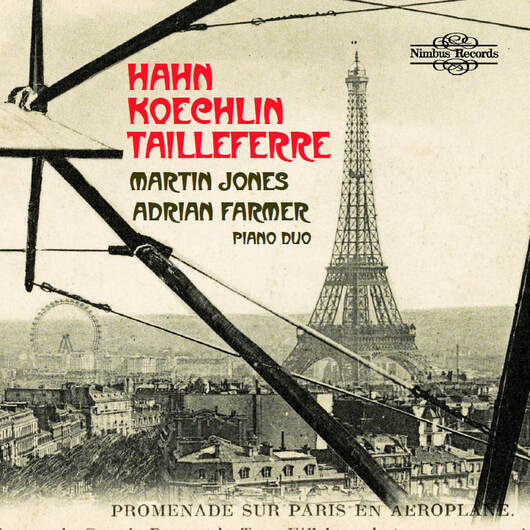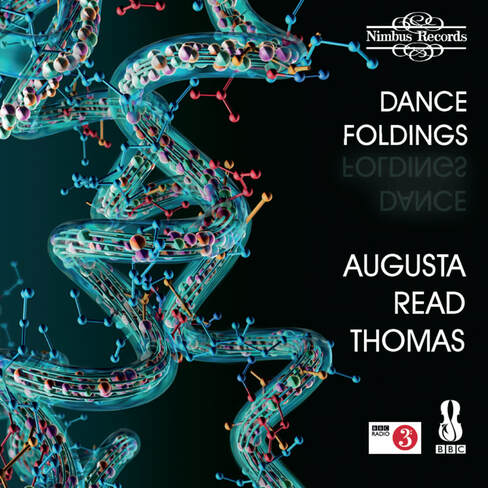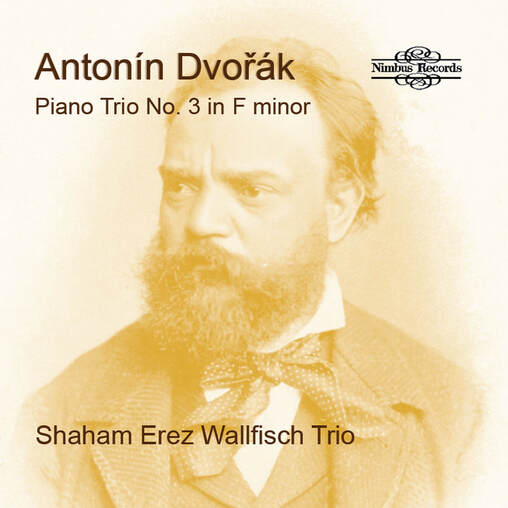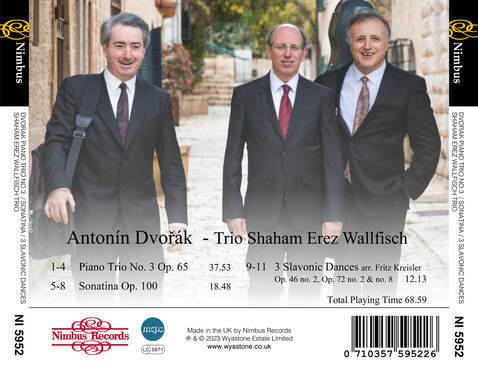Recorded during the first performances, as part of the Festival d’Aix-en-Provence, at the Théâtre du Jeu de Paume, Aix-en-Provence, France, on 5 July 2023.
|
Sir George Benjamin's opera Picture a Day Like This, with libretto by Martin Crimp, wll be released by Nimbus Records on 6 September 2024 (NI.8116).
An ordinary day. A terrible event. The death of her infant child sets in motion one woman’s search for a life-restoring miracle. All she needs to do – in the course of a single day – is find one genuinely happy human being. But when every encounter ends in disappointment, she turns finally to the mysterious owner of a magnificent garden…
Recorded during the first performances, as part of the Festival d’Aix-en-Provence, at the Théâtre du Jeu de Paume, Aix-en-Provence, France, on 5 July 2023.
Electronic press kit available for reviewers and radio producers from Ulysses Arts.
0 Comments
Vladimir Feltsman's A Tribute to Mozart piano album (NI.6448) is released by Nimbus Alliance on 6 September 2024. In addition to sonatas, variations, and concertos for piano and orchestra, Mozart wrote numerous works for solo piano: fantasias, rondos, adagios, and other assorted pieces of short and moderate length. We don’t know exactly why these works were written, but we know that Mozart had to come up with new material for his many public and private appearances as a composer and performer. In Mozart's time, composers inveriably were also performers. Any composition was also a potential source of income from publication and from patrons and friends to whom the works were dedicated. No matter why these marvellous works were written, we are lucky to have them. 'Fantasy in C minor K. 475 - Both C minor and E-flat major have three flats, and for Mozart these keys represent the Masonic values of “Strength, Beauty, and Wisdom,” and carry certain extra-musical and mystical implications… The beginning is dark and ominous… We are gently brought into a second episode in D major with a simple tune, gallant in style and execution. Out of nowhere there is an intrusion, a call of fate that breaks the peaceful atmosphere of the previous episode… This Fantasy ends with an ecstatic upsurge of energy in C minor scales, from low C in the bass to high C on top. Two and a half centuries later, we are still left wondering what just happened. Fantasy in D minor K. 397… It is another unfinished work; the manuscripts lost. The last ten bars were supplied by the composer A.E. Müller, an admirer of Mozart, and this became the standard version as published by Hertel. This Fantasy is a short work, complex and intriguing. Nine Variations on a Minuet by Duport K. 573 - Towards the end of the 18th century, variations and easy dances for keyboard were in great demand. Countless sets of variations of varying quality by diverse composers were published and sold to the public. Naturally, Mozart did not pass up this opportunity to make money and he wrote fifteen sets of variations for piano, mostly on borrowed themes. K. 573 is one such set. Mozart plays around with his material from the very beginning; the rhythmic formula of the main theme is altered right away in the fifth bar. Different pianistic textures are used in each of the nine variations, the first mimicking piano exercises and the others utilizing arpeggios, repeated notes, broken octaves, scales, double notes and what not. The obligatory slow variation “Adagio” is a parody, a spoof of Italian operatic tradition, with a Diva showing off her amazing vocal ability to an adoring public. In the last variation the time changes briskly from 3 to 2.' © Vladimir Feltsman VLADIMIR FELTSMAN Pianist and conductor Vladimir Feltsman is one of the most versatile and constantly interesting musicians of our time. His vast repertoire encompasses music from the Baroque to 20th-century composers. A regular guest soloist with leading symphony orchestras in the United States and abroad, he appears in the most prestigious concert series and music festivals all over the world. Born in Moscow in 1952, Mr. Feltsman debuted with the Moscow Philharmonic at age 11. In 1969, he entered the Moscow Tchaikovsky State Conservatory of Music to study piano under the guidance of Professor Jacob Flier. His debut at Carnegie Hall established him as a major pianist on the American and international scene. Electronic press kit for reviewers and radio presenters available from Ulysses Arts Ltd.
Nimbus releases Robert Saxton's Epic of Gilgamesh and The Resurrection of the Soldiers (NI 6447) on 5 July 2024 with the English Symphony Orchestra and English String Orchestra, conducted by Kenneth Woods.
Epic of Gilgamesh is the oldest written literary text in Middle Eastern/Western cultural history, predating the Hebrew Bible. The epic relates the story of King Gilgamesh, partly divine, partly human, who may have existed historically circa 2800 BC. From immature youth and a belief in his immortality, he eventually comes to accept the power and reality of Death.
There are five movements/scenes including the Prologue, where the gods try to restore a sense of balance, the journey to the Forest of Cedar in search of glory, and Apotheosis, where Gilgamesh visits Ut Napishti (precursor of Noah in Genesis) who survived the Flood and had been granted immortality by the gods. Gilgamesh fails the final task set by Ut-Napishti to test his suitability for eternal life, returning to Uruk to build his lasting monument, the city walls. The Resurrection of the Soldiers for string orchestra was commissioned by George Vass, to whom it is dedicated, and the English Symphony Orchestra, for the 2016 Presteigne Festival, with funds generously donated by the John S. Cohen Foundation and the Arts Council of England. The title derives from the final panel of Stanley Spencer’s Sandham Chapel visionary series of paintings which were the result of Spencer’s experiences in the British Army in World War One and depicts soldiers emerging from their graves on the last day. The piece is in three continuous parts: a slow, sustained introduction which is, in essence, a descent from the note E by means of a prolation canon, but which ascends to a rather intense climactic point before falling and giving way to a very active fugue which, after arriving at an anguished, sustained climax, is succeeded by a closing slow movement consisting of arising melodic line which permeates the entire texture heterophonically, leading to the closing E major triad. The work thus traces a cyclical path as it progresses towards a sense of resurrection, re-birth and hope. © Robert Saxton 
Robert Saxton was born in London in 1953. At 21 he won the Gaudeamus International Composers Prize in Holland and was Fulbright Arts Fellow at Princeton in 1986. Now Robert is Emeritus Professor of Composition at Oxford University, Composer-in-Association at the Purcell School, and Honorary Research Fellow at the Royal Academy of Music.
Robert has been commissioned by the BBC, London Symphony Orchestra, London Philharmonic Oorchestra, English Chamber Orchestra, London Sinfonietta, Nash Ensemble, Antara, Arditti and Chilingirian Quartets, St. Paul Chamber Orchestra (USA) and written for the Huddersfield, Aldeburgh, Cheltenham, City of London, Lichfield and Three Choirs Festivals.
Electronic press kit and listening link available for reviewers from Ulysses Arts.
Nimbus Records releases Steve Elcock, Symphony No. 8 and Violin Concerto on Friday 7 June 2024 (NI. 6446), with the English Symphony Orchestra and soloist Zoë Beyers, conducted by Kenneth Woods, as part of their 21st Century Symphony Project.
The 21st Century Symphony Project The 21st Century Symphony Project (21CSP) is an English Symphony Orchestra initiative conceived by conductor Kenneth Woods. The initial goal was to commission, premiere and record nine new symphonies by nine different composers. The 21CSP has been called 'one of the most important musical initiatives of modern times' by Robert Matthew-Walker, Editor of Musical Opinion, and 'the most important series of commissions and recordings of our times' by musicologist and cultural commentator Peter Davison, former Artistic Consultant at the Bridgewater Hall, Manchester. Alongside Steve Elcock’s Symphony No. 8, other works in the 21st Century Symphony Project include David Matthews Symphony No. 9 (NI 6382), Philip Sawyers Symphony No. 3 (NI 6353) and Adrian Williams, Symphony No. 1 (NI 6432).  Steve Elcock Steve Elcock
Symphony No. 8 'Following the weighty Sixth and Seventh symphonies, I felt the need to write a smaller scale piece before tackling the Ninth, the finale of which was already written and was monumental enough in character to require some substantial movements to precede it. I attempted to produce such a lighter piece by turning to an early string quartet written in 1981 when I was aged 24. I had dismissed it as juvenilia but thought it could perhaps be salvaged by arranging it for string orchestra and filling out the textures… While my first two symphonies still await either performance or recording after a quarter of a century, the Eighth was already on the programme of the Three Choirs Festival before I had even finished reorchestrating it… Symphony no. 8 was commissioned by the English Symphony Orchestra and first performed by them as part of the Three Choirs Festival in Kidderminster on July 28, 2021.' © Steve Elcock Violin Concerto 'With the first movement, I wanted to achieve a return to the classical momentum that had largely been lost throughout the Romantic era and onward. The energy is unflagging, verging on the desperate, relief being provided only by the two appearances of the expansive second theme; but even this is underpinned by a niggling rhythm in the violas. The second movement provides a welcome contrast. Its opening makes use of change-ringing techniques applied to slowly moving scales in violins and violas, evoking distant bells ringing across a valley.' © Steve Elcock
'Juxtaposing two major works which confirm his standing among the leading European symphonists of his generation ... This latest release warrants the strongest of recommendations.'
Richard Whitehouse, Arcana, 18 May 2024 'The more I discover and experience the music of Steve Elcock, the more I feel the need to recommend it to anyone who happens to read this review. If you enjoy classical music in general, with a preference for symphonic writing, this living composer ticks all the boxes when it comes to harmonic integrity, orchestration colors and textures, emotive power and structural stability.' Jean Yves Duperron, Classical Music Sentinel, 13 June 2024
Electronic press kit available for reviewers from Ulysses Arts
Nimbus Alliance releases Augusta Read Thomas's Terpsichore’s Box of Dreams and other world prèmiere recordings on 5 April 2024.
Augusta Read Thomas writes:
'I am eternally grateful to the entire Nimbus Records team. Music for me is an embrace of the world, a way to open myself to being alive in the world--in my body, in my sounds, and in my mind. I care deeply about musicality, imagination, craft, clarity, dimensionality, an elegant balance between material and form, and empathy with the performing musicians, recording engineers, as well as everyone who works in the presenting organizations.' 'Collaborating with the artists whose performances are on this recording has been one of the most exhilarating experiences of my creative life. It is difficult to express how grateful I am to the many extraordinary colleagues who have made this possible. It is pure magic -- deeply rewarding, fun, and sincere.'
'Previous instalments in this long-running survey of Augusta Read Thomas's œuvre have ranged far and wide within a catalogue that spans some 30 years to date. In contrast, we explore here a variety of works of more immediately recent vintage - the earliest dates from 2018. Between them, they fill out a vividly-coloured snapshot of Thomas' irrepressible current compositional persona. Many of her long-standing preoccupations are to be found in this collection: love of dance which propels the music into a tirelessly evolving voyage in both rhythmic and narrative terms; the iridescent, bell-saturated sonic environment that fills her musical landscapes with light and clarity; the sense of jazz auras acting as guiding spirits propelling the music on its course with its restless, hocketing rhythms and penetrating harmonic flavours; a celebration and understanding of instrumental virtuosity; the overall sense of her music engaged in a deep-seated interaction between the present and the past.' © Paul Pellay 
Augusta Read Thomas
The New Yorker called her “a true virtuoso composer.” Critic Edward Reichel wrote, “Thomas has secured for herself a permanent place in the pantheon of American composers of the 20th and 21st Centuries. She is without question one of the best and most important composers that this country has today. Her music has substance, depth, and a sense of purpose. She has a lot to say and knows how to say it—and in a way that is intelligent yet appealing and sophisticated.”  Form map of Laetitia's Caprice by Augusta Read Thomas Form map of Laetitia's Caprice by Augusta Read Thomas
Album Contents and Performers
TERPSICHORE’S BOX OF DREAMS 18:18 For flute (picc.), oboe, clarinet (bass clarinet), alto saxophone (baritone sax.), horn, 2 percussionists, harp, piano, 2 violins, viola, and 'cello (2023) Grossman Ensemble; Tim Weiss, conductor 1. Terpsichore Enters: 1:15 2. Dance No. 1 Scatter: 2:01 3. Dance No. 2 Tiptoe Caper: 1:11 4. Dance No. 3 Pointillistic Groove Flutter Pirouettes: 1:46 5. Dance No. 4 Slalom: 1:25 6. Dance No. 5 Dream: 5:09 7. Dance No. 6 Gambol: 2:37 8. Dance No. 7 Romp: 1:59 9. Terpsichore Departs: 0:45 10. STAR BOX For percussion quartet or percussion ensemble (2020): 6:20 John Corkill, Ian Ding, Kyle Flens, Cynthia Yeh 11. DANCE MOBILE For 13 players or small chamber orchestra (2021): 14:31 Grossman Ensemble. Stefan Asbury, conductor 12. LAETITIA’S CAPRICE For solo soprano saxophone (2023): 3:03 Phil Pierick, soprano saxophone 13. CARNIVAL for bassoon and wind ensemble (2022): 12:37 State University of New York Fredonia Wind Ensemble; Nadina Mackie Jackson, bassoon Paula Holcomb, conductor 14. BEBOP RIDDLE II for cello and piano (2022): 7:12 Alexander Hersh, 'cello. Tom Hicks, piano 15. CON MOTO for percussion quartet (2018): 7:28 John Corkill, Adam Rosenblatt, Garrett Arney, Nonoka Mizukami
Electronic press kit and advanced listening link for reviewiers available from Ulysses Arts.
Nimbus celebrates composer Richard Blackford's seventieth anniversary year with a major series of new album releases, music publications and concerts throughout 2024. 5 January 2024: Nimbus Music Publishing releases scores for Babel, a new cantata for chorus, soloists, piano, organ and percussion (NMP.1126) and Clarissa's Tango. The latter has two versions: for violin and piano (NMP.1172), and for violin and string orchestra (NMP.1255). Clarissa's Tango also will be released on the same date as an audio (NI.1580) and audio-visual single (NI.1581), performed by Clarissa Bevilacqua, violin, and Thomas Hoppe, piano.
1 March 2024: Nimbus Records releases Blackford's Songs of Nadia Anjuman, performed by The Britten Sinfonia and soprano Elizabeth Watts, as an EP (NI.6444):
Also on 1 March 2024: Lyrita Records releases La Sagrada Familia Symphony, with BBC National Orchestra of Wales conducted by Richard Blackford, and Babel: A Cantata, with the Ikon Singers conducted by David Hill (SRCD.432):
New Works by Richard Blackford from Nimbus Music Publishing: 5 January 2024
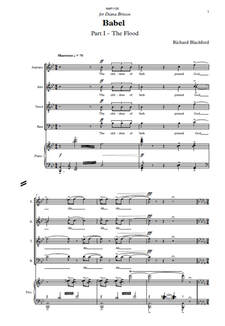
Richard Blackford writes about his new works: Babel is a dramatic cantata based on the stories of Noah’s Flood and the Tower of Babel, with a thrilling and colourful score using organ, piano and percussion. Babel uses the chorus extensively to narrate both stories, as well as to evoke the terror of the Flood, the exuberance of the construction of the tower, and of course the multi-lingual babble of languages to which they are condemned. In addition to set pieces, such as the Nimrod baritone aria, and the soprano aria, ‘Do not fear the largeness of the showers’, the three soloists often sing together as the other-worldly voice of God. The instrumental forces are relatively modest, with the piano duet supported by the sustaining power of the organ, backed by two percussionists. This sound world is redolent of those Britten masterpieces for amateur choirs, ensembles and audiences, which have inspired many composers since, and to which I too am gratefully indebted.' Babel's vocal score (NMP.1126) is for sale; full score and parts (NMP.1127) are available to hire. Approximate duration 38 minutes. 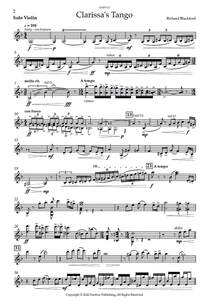
'In Buenos Aires, tango is described as the forbidden dance. In this performance the violin and piano capture not only the sound but also the essence of tango, creating an evocative dance between the instruments. The violin has the lead melodic material and the piano has some really exciting riffs and plays the supportive role guiding their interplay.
I remember seeing the amazing film Scent a Woman starring Al Pacino and Gabrielle Anwar. Pacino plays a blind veteran but he has an amazing sense of smell and he invites a beautifully young woman to dance a tango, something that he does supremely well. It's just one of the coolest most beautiful scenes that I can remember. After I saw it for the fifth time I just woke up one night with the idea of a tango which wouldn't go away, so I had to write it. Clarissa’s Tango starts with a short, cadenza-like introduction on the solo violin, the tango is cast in rondo form, with the central C section moving from the home key of D minor to D major. It’s an ebullient duet that makes virtuoso demands on the solo violin, from extreme high tessitura passages and multi-stops to fast passage work as the violin elaborates on the main tango melody.'
'Tango is very visual and we wanted to capture this as a part of our release. Alongside performing the première and making the audio recording, we also filmed a companion video in Berlin. Violin and piano, represented by red and black, are two perfect dance partners who find each other in this darkly lit club-like atmosphere, where the camera dances around them eliciting this Tango. But in the sunlight outside our red and black characters fail to find each other, only when they perform this Tango do then they finally come together as one. I performed Richard Blackford's Tango with the LGT Soloists throughout their tour of Europe, Asia and Australia from November 2023 to January 2024.' Clarissa Bevilacqua
Richard Blackford is becoming one of the foremost concert and media composers in Europe. His concert works are performed regularly around the world and his music for film and television is broadcast frequently in almost every European country. His acclaimed Pietà won an Ivor Novello Composer Award in 2020 for the Choral Category and has already received multiple performances.
'The music comes from the heart with integrity, and a technical assurance...There is a crying need for this kind of music.' The Independent on Sunday
Further Richard Blackford 2024 album, publication and live concert details will be published here.
Electronic press kit and listening links for revieweres available from Ulysses Arts. George Lloyd Archive of Scores and Recordings moves to Lyrita Nimbus Arts The Trustees of Lyrita Nimbus Arts (LNA) have reached an exclusive agreement with The George Lloyd Society (GLS) to take over sale and hire of all George Lloyd’s scores held by the Society, as well as the commercial exploitation of the recordings made by the Society in the 1990s, conducted by the composer.
'Hugely impressive, splendidly designed musical architecture.' Stuart Millson, Quarterly Review, 29 February 2024 'It is an extraordinary journey to hear the whole of George Lloyd’s symphonies over a single period of time, a psychodrama if ever there was one.' Geoffrey Atkinson, British Music Society Journal 26 February 2024 (Symphones 1-6) and 22 March 2024 (Symphonies 7-12) 'An absolute must-have for anyone deeply invested in powerful and polished 20th century symphonic writing.' Jean-Yves Dupperon, Classical Music Sentinel, March 2024 'Those of us who have admired Lloyd’s music for many years will welcome the consolidation of his legacy in this way and will hope it stimulates more performances and perpetuates his name even more.' Jonathan Woolf, MusicWeb International, 13 March 2024 'Rejoice! A glorious symphonic cycle by a British composer has been issued as a set for the first time.' Damian Thompson, The Spectator, 13 April 2024 All scores now available from Lyrita. The recordings are being released by Lyrita between March 2024 and February 2025: www.lnarts.org www.lyrita.co.uk www.georgelloyd.com Electronic press kits and pre-release listening links for reviewers are available from Ulysses Arts. GEORGE LLOYD SIGNATURE EDITION AUDIO RELEASES 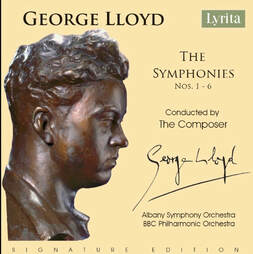 1 MARCH 2024 SRCD2417: Symphonies Volume 1 No. 1-6; Charade ‘Scenes from the ‘60s' Overture John Socman BBC Philharmonic Orchestra Albany Symphony Orchestra George Lloyd, conductor 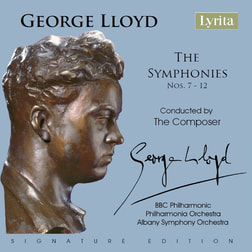 5 APRIL 2024 SRCD 2418: Symphonies Volume 2 No. 7 - 12 (quadruple album) BBC Philharmonic Orchestra Philharmonia Orchestra Albany Symphony Orchestra George Lloyd, conductor  3 MAY 2024 SRCD 420: Requiem and Psalm 130 The Exon Singers Stephen Wallace, countertenor Jeffrey Makinson, organ Matthew Owens, conductor  SRCD 2419: A Litany and A Symphony Mass Janice Watson, soprano Jeremy White, bass-baritone Bournemouth Symphony Orchestra Brighton Festival Chorus Philharmonia Orchestra and Guildford Choral Society George Lloyd, conductor  7 JUNE 2024 SRCD 2421: The Piano Concertos No. 1 ‘Scapegoat’, 2, 3 and 4 (double album) Martin Roscoe, piano Kathryn Stott, piano BBC Philharmonic Orchestra London Symphony Orchestra George Lloyd, conductor  5 JULY 2024 SRCD2422: The Violin and 'Cello Concertos (double album) Violin Concerto No. 1 and No. 2 'Cello Concerto Cristina Anghelescu, violin Anthony Ross, 'cello Philharmonia and Albany Symphony Orchestras David Parry and David Alan Miller, conductors  2 AUGUST 2024 SRCD 2423: The Piano Works: Solo and Duo: double album The Lilly Leaf and The Grasshopper, The Transformation of that Naked Ape, An African Shrine, The Road through Samarkand, St. Antony and the Beggar, Intercom Baby. For two Pianos - Aubade, Eventide, The Road Through Samarkand. Anthony Goldstone and Caroline Clemmow, piano duo Kathryn Stott; Martin Roscoe  SRCD 0425: The Works for Brass Royal Parks, Diversions on a Bass Theme, Evening Song, H.M.S. Trinidad March, English Heritage, A Miniature Tryptic John Foster Black Dyke Mills Band, conducted by David King Equale Brass Quintet 5 SEPTEMBER 2024: Score Publications SRMP 0105-0114: Aubade | Eventide Road Through Samarkand for Two Piano (and version for solo piano) Lullaby | St. Anthony & the Beggar | The Agressive Fishes The Lily-leaf the Grasshopper | The Transformation of that Naked Ape An African Shrine 4 OCTOBER 2024 SRCD2426: John Socman (1951) - the complete opera (double album) Using the composer’s suggestions, we presents the complete opera by combining the composer's studio recording of excerpts with a BBC broadcast recorded 'off-air' by Lyrita's founder Richard Itter. 1 NOVEMBER 2024 SRCD0424: Lament for Violin & Piano, Air and Dance, Sonata for Violin & Piano, Seven extracts from The Serf. 4 APRIL 2025, TBC SRCD2427: Iernin (1934) - the complete opera (triple album), recorded in 1985, conducted by the composer with the BBC Concert Orchestra and Marilyn Hill-Smith in the title role (triple album) 'George Lloyd showed that rarest of all qualities in a British composer, an almost unerring perception of what the stage requires. An extraordinary achievement.' The Times 'One of the most successful operas written by a British composer'. The Musical Times George Lloyd was born in St Ives, Cornwall, on 28 June 1913. He started to learn the violin at the age of five and was a pupil of the violinist Albert Sammons for six years. He began composing when he was ten. A rigorous musical training ensued, including lessons in counterpoint from C. H. Kitson and composition studies with Harry Farjeon. National prominence came with George Lloyd’s first opera, Iernin (1933-34), featuring a libretto by his father, William Lloyd. Based on a Cornish legend, the opera was premiered at The Pavilion, Penzance in November 1934, conducted by the composer. An endorsement by Frank Howes, music critic of The Times, led to Iernin being performed by the New English Opera Company at London’s Lyceum Theatre in June 1935. It was a sell- out for three weeks. The following year, whilst holidaying in Switzerland, George met Nancy Juvet. They married in January 1937. Nancy’s love and support throughout six decades of marriage was to prove pivotal to her husband’s continued creativity and indeed to his very survival. Lloyd’s second opera, The Serf, was premiered by the English Opera Company at Covent Garden in London in 1938. William Lloyd supplied the libretto, setting the story in Yorkshire at the time of King Stephen. A review in The Stage newspaper described the opera as ‘full of promise for the future’. This prospect of even greater musical attainment was about to be shattered. When war broke out in September 1939, Lloyd joined the Royal Marines as a bandsman. In 1942 he served as a radio signaller on Arctic convoys to Murmansk on the cruiser HMS Trinidad. During one of these convoys the ship was struck by torpedoes, an oil tank ruptured and the transmitting station which Lloyd was helping to operate filled with oil. There were heavy casualties and he was almost drowned. He was mentally and physically traumatised to the extent that his doctors believed he would never recover. Nancy Lloyd refused to accept this verdict and slowly nursed her husband back to health. Convalescing at Nancy’s lakeside home at Neuchatel, Switzerland, Lloyd began to write music again. The resulting Fourth and Fifth Symphonies (1946, 1948), among his finest works, were not performed at the time. After returning to England, he won an Arts Council commission to compose an opera for the Carl Rosa Company to tour around the country during the Festival of Britain in 1951. The ensuing stage work, John Socman, featured another libretto by his father, which told the story of a Wiltshire solider returning from Agincourt. The production, which premiered in Bristol in May 1951, was ruined by artistic differences between conductor and director. Shortly after this debacle Lloyd’s father died and George’s health collapsed again. George and Nancy Lloyd bought a small cottage at Folke in Dorset and began earning a living as market gardeners. After growing and selling carnations, they started mushroom farming. During these years of self- imposed exile, George composed for three hours before the working day. Consequently, when the Lloyds sold their smallholding in 1973 and returned to London, they brought with them a portfolio containing 20 years’ worth of scores. A friendship with John Ogdon had far-reaching consequences. Lloyd assisted with the orchestration of the pianist-composer’s Piano Concerto and Ogdon recorded for EMI Lloyd’s piano piece African Shrine, shortly after premiering it in 1969. In the same year Ogdon took the score of Lloyd’s Eighth Symphony to the BBC and had it accepted. Eight years elapsed before it was broadcast. In the meantime, another of Lloyd’s champions, conductor Edward Downes, premièred the Eighth Symphony with the BBC Northern Symphony Orchestra, broadcast on Radio 3 in July 1977. In the succeeding five years, Downes tirelessly promoted and disseminated Lloyd’s music, including a performance with the BBC Philharmonic of the Sixth Symphony at the Proms in July 1981, the first appearance of the composer’s music at the celebrated summer music festival. Inspired by his new-found popularity, Lloyd took up the baton himself. In 1986 he conducted the premiere of his Eleventh Symphony with the Albany Symphony Orchestra in New York. He also wrote his Twelfth Symphony for the orchestra. Other notable products of his glorious Indian summer of creativity include brass band piece Royal Parks, A Symphonic Mass and the 'Cello Concerto. Having suffered heart problems for a year, George Lloyd died at University College Hospital, Marylebone, London, on 3 July 1998. A service was held a week later at Golders Green crematorium. His last work, the Requiem, written in memory of Diana, the Princess of Wales, was completed shortly before his death and premiered at the 2000 Oxford Contemporary Music Festival. Paul Conway, 2023 Lyrita Nimbus Arts Registered Charity No. 1203867 Trustees: Dr Richard Blackford, Adrian Farmer, Lynda Farmer, Charlotte de Rothschild, Antony Smith Martin Jones completes his survey of Brazilian pianists with an album of music by Oscar Fernândez, releasing on 5 January 2024 on Nimbus Records (NI.8115). Oscar Lorenzo Fernândez’ (b.1897 - d.1948) work can be divided into three periods, the first (1918-22) is influenced by French Impressionism, the second (1923-38) is marked by the systematic use of folklore, particularly amerindian rhythms and harmonies, rather than ‘popular’ urban melodies. Finally (1939-48) was a period of increasing introspection and the development of a more universally recognised language. ©Adrian Farmer Aged 18, Fernandez composed his first opera Rainha Moura, based on a popular Spanish novel of the 19th century. Initially his parents didn’t support his inclination towards music, but after an unexpected nervous collapse where he spent his recovery at home playing piano, he gained their approval in 1917 and he enrolled at the National Institute of Music. In 1920 he gave his first concert where he performed Arabesca and Miragem and in 1922 Arabesca and Nocturnal were awarded prizes at the International Competition of the Society of Musical Culture in Rio de Janeiro (ICSM). In the early 1930s the President of Brazil asked Luciano Gallet and Mário de Andrade to formulate a program to reform the official teaching of music. They were asked to ‘rescue’ Brazilian culture. Fernandez helped do this and it can be seen within his opera Malazarte which premiered in 1941. Fernandez wrote of the influences of national folklore and modernist language in his opera “I’ve done something very different from what has been done so far here. A Brazilian thing, very Brazilian. But of a well-understood Brazilianness, of course. For me, Brazilianism is the intimate meaning that every work of ours must have, this quality of being born from our land.” (Lorenzo Fernandez. In: Aquarone, Francisco. History of Brazilian music. Rio de Janeiro: Francisco Alves, 1944). Electronic press kit available from Ulysses Arts. Digital links will be published here. Nimbus Alliance releases Vladimir Feltsman's Schubert Volume 7 double album of the Impromptus, completing his survey of Schubert's piano music, releases on 5 January 2024 (NI.6442). 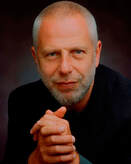 Vladimir Feltsman writes, 'In Schubert’s music he is able to reconcile his innermost longings with the realities of life, to overcome the fear of death and restore the “lost paradise” of innocence and beauty. Very few artists have expressed their inner world, their vision of heaven, with such lucidity and conviction. Schubert composed an incredible amount of music during the last year of his life, as if knowing that he was running out of time. These works represent the pinnacle of his creativity, summing up his exploration of different musical forms, genres, and manner of writing. Among his finest compositions from this period are two sets of Impromptus and the Musical Moments that are included in this recording.' Also available by Vladimir Feltsman: Franz Schubert Piano Works Volumes 1-6. Pianist and conductor Vladimir Feltsman is one of the most versatile and constantly interesting musicians of our time. His vast repertoire encompasses music from the Baroque to 20th-Century composers. A regular guest soloist with leading symphony orchestras in the United States and elsewhere, he appears in the most prestigious concert series and music festivals all over the world. Born in Moscow in 1952, Mr Feltsman gave his debut with the Moscow Philharmonic aged eleven. In 1969, he entered Moscow's Tchaikovsky State Conservatory of Music to study piano under the guidance of Professor Jacob Flier. His Carnegie Hall debit established him as a major pianist on the American and international scene. A dedicated educator of young musicians, Mr Feltsman holds the Distinguished Chair of Professor of Piano at the State University of New York, New Paltz, and is a member of the piano faculty at the Mannes College of Music in New York City. Nimbus Alliance UPC 0710357644221. Duration: 2 hours 38 minutes. Number of CDs: 2 Electronic press kit and review listening links available from Ulysses Arts. Nimbus Records releases the eigth vulme of David Ponsford's French Organ Music From The Golden Age on 5 January 2024, to accompany the book he published under the same title. David Ponsford is an organist, harpsichordist, musicologist and conductor, and an authority on keyboard music of the seventeenth and eighteenth centuries. He was extremely fortunate to be able to study organ with Peter Hurford, Lionel Rogg and Piet Kee, and harpsichord with Kenneth Gilbert and Gustav Leonhardt. Since 2021, he has taught organ and harpsichord & organ continuo at the Royal Academy of Music, London. The present release is Volume 8 in the series ‘French Organ Music from the Golden Age’, performed by David Ponsford on French historic organs. Gaspard Corrette (c.1671 – before 1733) Corrette become organist of the parish church of Saint-Herbland, whose organ rivalled that of the cathedral in scope and size. Corrette’s Messe du 8ℯ ton pour l’orgue was his only publication and pieces like Concert pour les flȗtes and Dessus de tierce par accords vouch for the influence of Boyvin (a French Baroque composer b.1649 - d.1706) upon Corrette. This eight-volume series emerged from David Ponsford's seminal book French Organ Music in the Reign of Louis XIV (Cambridge University Press, ISBN: 9781316620748) 'This book is a must-have for any serious organist.' Choir and Organ 'Invaluable to understanding and appreciating its subject.' Early Music The Organ of Marmoutier Abbey At the beginning of the 18th century a more modern version of the Organ became fashionable in Paris. This new instrument was intended to accompany the liturgy, but was also part of the movement of de-Germanisation at Marmoutier following a conflict between nationalities among the abbey’s clergy. The organ's construction began in 1709 by Andreas Silbermann. Unfortunately, he was stabbed by a cabinet-maker whom he had dismissed. He did not return till 1710, and died in 1734. Only in 1745 was Johann Andreas was comissioned to complete the organ. Also available from this collection Volume 1 – NI6213 Volume 2 – NI6225 Volume 3 – NI6268 Volume 4 – NI6292 Electronic press kit available from Ulysses Arts. Digital download and streaming links will be published here.
Nimbus Alliance releases the Wiener Schubert Trio's album, with works by Pfitzner and Smetana, on Friday 3 November 2023 (NI.6441).
'Hans Pfitzner (1869-1949) and Bedřich Smetana (1824-84) hold special places in music history as ardent nationalist composers and creators of significant stage works. Pfitzner’s operas and incidental music culminated in his Palestrina (1917), while Smetana established a canon of eight national operas incorporating traditional Czech dance and song into much of his mature oeuvre. Both composers also contributed widely to other genres, including significantly, if not extensively, to the chamber music repertory. Although written more than forty years apart, these two piano trios share notable common ground. Both were written during troubled times for their creators and count among their composer’s first mature artistic achievements; moreover, both resort to motivic recall or transformation between movements with the intention of realising structural unity, and both received hostile critical receptions.' Robin Stowell. The Wiener Schubert Trio (Vienna Schubert Trio) was founded in 1985 and performed as a full-time ensemble until 1993. From the outset the Trio appeared regularly in the music centres of Europe, North America and Asia, and established rapidly a reputation as one of the foremost piano trios. After its first United States tour in 1986, the Trio was named the year’s ‘Best New Visiting Chamber Ensemble’ by The Washington Post. The Ensemble devoted itself to both the established masterpieces of the repertoire and many less familiar works, often presented in the context of concert series designed to demonstrate relationships between various composers and styles.
Boris Kuschnir (b.1948) studied violin at the Moscow State Tchaikovsky Conservatory but his artistic development was profoundly influenced by Dmitri Shostakovich and David Oistrakh, who also taught him. He was a founding member of the Moscow String Quartet, where he played for nine years. He was a co-founder of the Vienna Schubert Trio and later the Vienna Brahms Trio, making numerous recording for record labels such as EMI, Naxos and Nimbus Records. He has received numerous awards at international violin and chamber music competitions in Paris, Belgrade, Sion, Trapani, Bratislava, Florence, Trieste and Hamberg.
Claus-Christian Schuster (b.1952): Taught initially by his father, he went on to study at the Vienna Musikhochschule, Indiana University School of Music and Moscow Tchaikovsky Conservatory. He has won numerous international piano and chamber music competitions, and until 1984 he performed worldwide as a soloist. After he founded the Vienna Schubert Trio he made regular guest appearances. However, immediately after the break-up of the Vienna Schubert Trio in 1993 he formed the Altenberg Trio Vienna, where he continued his international chamber music activities with increased intensity. Martin Hornstein (1954–2009) was most influenced by his teachers Valentin Erben and Harvey Shapiro as well as by members of the Alban Berg Quartet, who stirred his early interest for chamber music. He has performed as a chamber musician with numerous colleges including Christian Altenburger, Thomas Christian and Eszter Haffner as well as with ensembles like the Aron Quartett, the Artis Quartet and the Orlando Quartett. Between 1985 and 1993 he was the Vienna Schubert Trio's 'cellist, and from 1994-2004 a member of the Altenberg Trio Vienna. With these two ensembles he gave more than 1,000 performances across the world.
Electronic press kit for reviewers available from Ulysses Arts.
Nimbus Alliance releases the world première recording of Philip Sawyers, Mayflower on the Sea of Time, on Friday 3 November, with soloists April Fredrick and Thomas Humphreys, the English Symphony Orchestra and Chorus, conducted by Kenneth Woods.
Philip Sawyers, Mayflower on The Sea of Time World Première (NI6439) April Fredrick, soprano Thomas Humphreys, baritone English Symphony Orchestra Chorus English Symphony Orchestra Kenneth Woods, Conductor
'The 400th anniversary of the Mayflower's sailing to New England was in 2020. My task as a composer was to write a substantial choral and orchestral work to celebrate this event and the challenges the Pilgrims faced in the New World. My librettist wrote an imaginative piece that incorporated both a narrative and a reflection on the wider implications the story contained. Human attributes and frailties, moral, religious and political questions are touched upon. The resulting oratorio, Mayflower on the Sea of Time, is in four parts. The soprano and baritone soloists take on multiple roles as both narrators and different characters from the story.' Philip Sawyers
This recording captures the debut performance of the English Symphony Chorus. Assembled for this project, the group brings together some of the finest professional singers from across the UK. Ensemble members appear as part of elite groups such as The Sixteen, performers on the operatic stage, working as lay clerks at cathedrals across the UK, as well as working with leading orchestras and new music ensembles.
'Given the strong narrative of the work's source material, it will be no surprise to listeners to hear music that strives forward purposefully. In his symphonies, Philip takes care to highlight structural moments, punctuating musical sentences and paragraphs with great precision and clarity, whereas Mayflower is a study in constant transition and transformation.' Kenneth Woods
'All praise goes to the four very impressive soloists and the [English Symphony] Orchestra and chorus and not least to [Kenneth] Woods, whose commitment to Sawyers has enabled this music to reach a much wider audience, which it thoroughly deserves.' Gary Higginson, British Music Society, 25 October 2023
Electronic press kit for reviewers available from Ulysses Arts.
HAHN, KŒCHLIN, TAILLEFERRE PIANO DUOS WITH ADRIAN FARMER AND MARTIN JONES RELEASED ON 7 JULY 20232/5/2023
Martin Jones has been one of Britain’s most highly regarded solo pianists since first coming to international attention in 1968 when he received the Dame Myra Hess Award. The same year he made his London debut at the Queen Elizabeth Hall and his New York debut at Carnegie Hall, and ever since has been in demand for recitals and concerto performances. He has made over 90 recordings with Nimbus Records exploring rarely-played music including the complete works of 18 composers.
Adrian Farmer trained as an accompanist at Manchester's Royal Northern College of Music following a music degree at Birmingham University. Adrian has made several recordings with other Nimbus artists: bass-baritone Shura Gehrman, pianists Nina Walker, Simon Callaghan, and Martin Jones. It is with soprano Charlotte de Rothschild that he has found his most enduring partnership releasing albums which include the première recording of the songs of her ancestor, Mathilde de Rothschild.
REVIEWS
'Recording quality is pristine, and the two pianists play this repertoire with true understanding. Altogether, an absolute delight.' Phillip Scott, Limelight, September 2023 Roger Nichols, BBC Music Magazine, 8 August 2023 William Kreindler, MusicWeb International, 23 August 2023 Michel Dutrieue, Stretto, 14 July 2023 Núria Serra, Sonograma, 29 June 2023 Electronic press kit available from Ulysses Arts
DANCE FOLDINGS FOR ORCHESTRA, BY AUGUSTA READ THOMAS, RELEASED BY NIMBUS RECORDS ON 7 JULY 20232/5/2023
In celebration of the diversity and published objectives of the Royal Albert Hall on the occasion of the venue’s 150th anniversary, BBC Radio 3 commissioned DANCE FOLDINGS for orchestra: the prompt was to reflect the arts and sciences as they are now. The natural world, explored by scientists, engineers, and physicians in laboratories and clinics, offers a wealth of opportunities to explore resonance and balance through sound. Few orchestral works attempt to capture the kinetic and emotional content of scientific topics and convey these concepts through abstract, rather than descriptive, music. The musical materials of DANCE FOLDINGS for orchestra take as their starting point the metaphors, pairings, counterpoints, foldings, forms, and images inspired by the biological "ballet" of proteins being assembled and folded in our bodies.
Dance Foldings was recorded in the presence of the composer, and produced in association with BBC Radio 3 and the BBC National Orchestra of Wales. Augusta Read Thomas is one of the most active composers in the world, with commissions, performances, recordings, awards, and honours, but she is also a long-standing, exemplary citizen of the profession at large with an extensive and deeply committed history as a generous colleague in the profession. She is without question one of the best and most important composers of our time. Her music has substance, depth, and a sense of purpose. She has much to say and knows how to say it, and in a way that is intelligent yet appealing and sophisticated.
Electronic press kit available from Ulysses Arts.
NI5952: Antonin Dvořák Piano Trio No.3 – Shaham Wallfisch Erez Trio
Antonín Dvořák (1841-1904) was a prolific and versatile composer who made richly diverse contributions to practically every genre of classical music. As a violist and keyboard player, he had a particular affinity with chamber music composition. Some of his chamber outputs held significance at crucial milestones in his career, as this disc clearly corroborate. Piano trio.No.3 is dark and reflects Dvořáks personal grief due to the loss of three of his children in infancy, the death of his mother and self-doubt. Dvořák began to compose his Sonatina Op.100 in 1893 and completed it the same year, dedicating it ‘to my children’ after taking into consideration his 15 year old daughters piano playing abilities, and 10 year olds sons violin. It was ‘intended for young people … but grown-ups, too, may not be unwilling to amuse themselves with it.’ The legendary violinist, Fritz Kreisler’s version of the Slavic Dance in E minor remains fairly faithful to Dvorak’s original whereas his arrangement of Op.72 is much freer from its waltz like strains and skillful use of double stopping making much of it sound like a violin duet. Trio Shaham Erez Wallfisch was founded in 2009 and comprises three of the world's finest international instrumentalists. Since formation, the Trio has been invited numerous times to prestigious chamber music series at venues such as London’s Wigmore Hall, Amsterdam Concertgebouw, Rotterdam De Doellen, Hamburg Elbphilharmonie. The Trio oftens appears in Spain, the UK, Ireland, the Netherlands, Belgium, Israel and Canada. It was invited by the Wigmore Hall to present the complete Beethoven Piano Trios in 2020, the composer’s 250th anniversary. NI5952 Antonin Dvorak Piano Trio No.3 1-4. Piano Trio No. 3 Op. 65 37:53 5-8. Sonatina Op. 100 18:48 9-11. 3 Slavonic Dances arr. Fritz Kreisler Op. 46 No. 2, Op. 72 & No. 8 12:13
Also available from Shaham Wallfisch Erez Trio on Nimbus Records: Rachmaninoff – Russian Piano Trios.
|
UA Press Centre
New recordings, press releases, media resources, music industry comment and more from Ulysses Arts. Archives
June 2024
Categories
All
|







